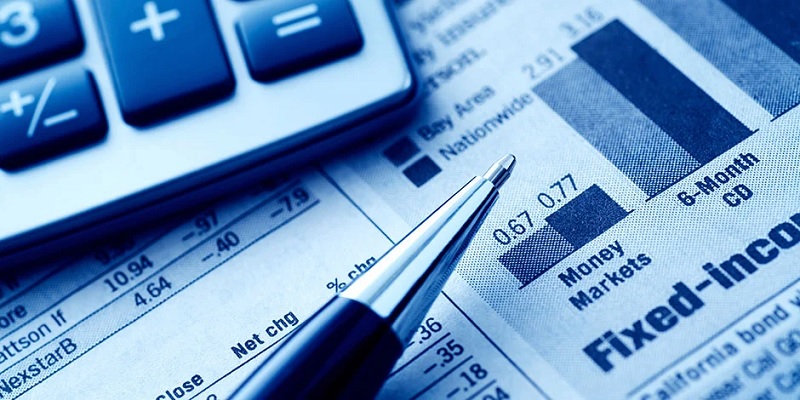 If you aren’t paying upfront for an item and apply for financing it, you must pay interest to the institution that’s lending you the money. However, you may not know exactly what interest rates are and why you should care. It is important that you are informed about interest rates to figure out what you might qualify for and how you can use them to your advantage.
If you aren’t paying upfront for an item and apply for financing it, you must pay interest to the institution that’s lending you the money. However, you may not know exactly what interest rates are and why you should care. It is important that you are informed about interest rates to figure out what you might qualify for and how you can use them to your advantage.
To put it simply, interest rates are the percentage of the principal, or loan amount, that a lender charges you in exchange for your use of its funds. To fully understand how interest rates work and their impact on your everyday life, be sure to keep reading.
 |
 |
How Interest Rates Work
Borrowing money from a lender or credit card company for a purchase means that you get charged a fee for the cost of using those funds. However, you may be able to avoid paying interest when you pay off a balance in full each month on your credit card.
Banks and lenders charge you interest to turn a profit and to shield themselves from risk. A bank might charge you a higher rate if you have a lower credit score because they might believe you to be a high default risk. Because of this, people with good credit scores usually get the lowest-interest loan and credit card offers.
Lenders determine your rate based on a few factors other than your credit score:
- The type of credit: A secured loan is backed by collateral, which means it poses a lower risk to the lender. For example, if you fail to pay your mortgage, the bank can seize your house. Unsecured credit, such as credit cards and most personal loans, come with much higher interest since the lender has no property to repossess if things go awry.
- The length of the loan: If you need a longer period to repay your loan, the rate will be higher than a short-term loan. Not only will your borrowing relationship with the lender last longer, but you’re also paying for the additional risk of possible default during the extended life of the loan.
What are Common Types of Interest Rates?
Interest rate is a rather broad term, and doesn’t take into account the differences among various types of interest rates.
- Fed Interest Rate: The rate that banks charge other banks for lending them money from their reserve balances on an overnight basis. The Federal Reserve uses its federal funds rate to keep a healthy supply of available funds and to control inflation as well as other economic risks.
- Prime Interest Rate: Banks charge this rate for their most creditworthy corporate customers. The prime interest rate is used as a point of reference for other interest rates, including adjustable-rate mortgages, credit cards, and personal loans.
- Annual Percentage Rate: APR describes the interest rate as a yearly amount and includes all other loan-related fees, such as origination and transaction fees. While you might hear the term “interest rates” more frequently, the APR actually takes into account the total amount you’ll pay for the cost of borrowing.
- Compound interest: As opposed to simple interest, compound interest applies to the principal loan amount as well as the interest that has accrued for previous periods. It is typically used for longer-term loans or savings accounts and CDs.
- Discount rates: The rate the Federal Reserve charges other financial institutions that need to borrow its funds.
- Simple interest: Banks usually use a simple interest formula to calculate the interest on a loan or deposit. Simple interest applies to the principal loan amount. It is generally used for short-term loans or credit card balances.
How it Can Impact Your Financial Decisions
Interest rate changes can impact every aspect of your financial life, but you’ll notice the difference in new, variable-rate financial products.
- Savings accounts: Interest rate cuts mean you’ll earn less money on your deposits; conversely, when the Fed hikes rates, savings accounts are where you’ll stand to benefit.
- Certificates of Deposit: Your rate is already locked in if you currently have CDs. However, if you intend to purchase a new CD, any rate cuts may lower the rate available to you, and a rate hike will increase the interest rate.
- Personal loans: If you have a personal loan with a variable rate, you may notice a change in the interest rate. If you have a fixed-rate loan, you won’t see a difference in the rate.
- Mortgage Loans: When rates rise while you are house-shopping, it could affect how much you could afford to pay for a home. Once you own your house, if you have a fixed-rate mortgage, you’ll be in good shape, but your interest rate could rise or fall with an adjustable-rate mortgage.
- Student loans: You can capitalize on lower rates by refinancing your student loans, which will lower your overall interest and shave a chunk off of your monthly payment. Federal loans do not change since they have fixed rates.
- Credit card interest rates: Most credit card rates are variable, meaning they change in response to the fluctuations in the central interest rate. However, they can also change at any time–even when other rates are stable.
How Interest Rates Impact the Economy
Interest rates have both a good and bad affect on the economy of the United States. Here are the main ways interest rates affect the economy:
- Inflation: When rates sink too low, that can spur excessive purchases that lead to inflation. The Federal Reserve notices that the economy is inching dangerously close to exceeding their target inflation rate. When this happens, they reverse the trend by cutting the federal funds rate, which will eventually slow Americans’ spending and cool down the economy.
- Recession: Whenever there’s a recession, such as the financial crisis in 2008, the Fed slashed rates to nearly zero to help the economy stabilize. Those rates remained near zero until 2015. That move was intended to encourage consumers to resume spending since borrowing money then became much cheaper.
- Stock and Bond Market: Interest rates have a direct effect on the stock and bond market. When interest rates are high, businesses tend to rein in spending, which causes stock prices to drop. Lower rates spur more confidence and purchasing, which elevates stock prices. When interest rates rise, bond prices fall, and as rates decrease, bond prices rebound.
Author’s Verdict
As you can see, interest rates have a major impact on your financial life and even broader aspects such as the US economy. It is crucial that you understand the important aspects about interest rates to ensure that you are making the best financial decisions.
In addition, we have a list of bank promotions to get some extra cash in your pockets today. You may also want to check out savings accounts if you want to get started on saving up money.




